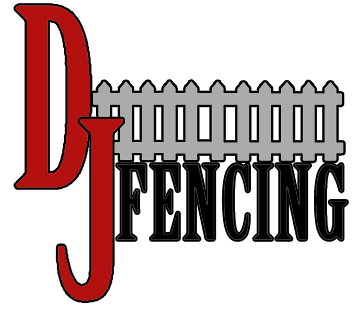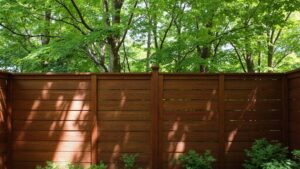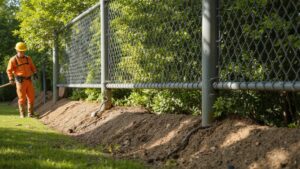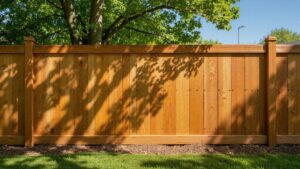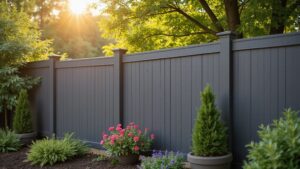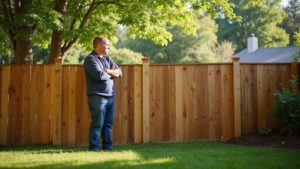Choosing the right fence for your property isn’t just a decision—it’s an investment in your home’s safety and appearance. You’ll want to balance your need for privacy, security, and style while also considering local rules and maintenance needs. Every fencing material has its own pros and cons that can affect your choice. Before you decide, let’s look at the key things that will help you find the right fence.
Key Takeaways
- Decide if your fence is mainly for privacy, security, or keeping pets in—this helps guide your choice of material and style.
- Check your property lines and local rules to avoid legal problems and follow any height or design limits.
- Pick a fencing material based on how much care it needs, how long it lasts, and how it looks—make sure it fits your lifestyle and area.
- Think about different fence styles to improve your home’s look and make sure the design matches your house and garden.
- Plan for both the cost of putting the fence up and future maintenance to stay happy with it long term.
Understanding Your Fencing Needs
How do you know which fence is best for your home? Start by thinking about why you need a fence. Do you want more privacy, better security, or just to keep pets safe? Your reason will help shape your choice.
Then, look at your property lines. Knowing where they are helps you stay within legal boundaries and make the most of your space.
Picture a strong wooden fence that blocks unwanted views or a classic picket fence that adds charm to your front garden.
Think about how much maintenance you’re okay with—some materials need more care than others.
Also, look at your neighbourhood. Your fence should match your home and the surroundings.
Popular Fencing Materials: Pros and Cons
When choosing fencing materials, wood brings a natural, warm look that can boost your home’s charm.
But remember, it may need regular upkeep and might not last as long as some other options.
Vinyl fences are easier to care for and last longer, but they often come in fewer colours and can fade over time.
Wood Fencing Benefits
Wood fencing is popular for its natural beauty and flexibility. It blends nicely with many gardens and makes your home feel welcoming.
Whether you like rustic cedar or smooth pine, wood offers different looks to match your taste. With the right care, it can last for years, though it might need treatment now and then.
You can also personalise wood fencing easily—paint it, stain it, or add designs.
Choosing wood means picking something stylish and strong that works well for many homeowners.
Vinyl Fencing Drawbacks
Vinyl fencing may sound great because it’s low-maintenance, but it does have some downsides.
There aren’t many colour choices, and the ones available might not match your home perfectly.
It can also get damaged by extreme weather—heat might make it bend, and cold can make it brittle.
Over time, the colour might fade, and if it gets damaged, finding matching pieces can be tricky.
Think carefully about these points before choosing vinyl for your garden.
Exploring Different Fence Styles
There are lots of fence styles to choose from, each offering a mix of style and function.
Modern fences have clean lines, while traditional ones give off a cosy, classic vibe. Wrought iron fences add elegance, while chain-link fences keep things secure without blocking the view.
Eco-friendly options are available too if you care about the environment.
Small details like lattice tops or post caps can give your fence a more finished look.
And with many colours to choose from, you can match your fence to your home’s look perfectly.
Considerations for Fence Height and Design
Fence height and design are important and often depend on your local council’s rules and what you want the fence to do.
Are you trying to create privacy, make your home safer, or just make your garden look nicer?
Think about both how it looks and how it works—your fence should match your house and your goals.
Local Regulations Impact Height
Local rules matter a lot when planning a fence. Councils often have rules about how high your fence can be and what it should look like.
Some areas only allow a four-foot fence in the front garden but allow six feet at the back.
These rules help keep your area looking nice and safe.
Breaking the rules could mean fines or having to take your fence down—so always check first.
Purpose of Fence Design
Think about why you need the fence—this affects both its design and height.
Do you want privacy, safety, or a better-looking garden? Once you know that, you can pick something that does the job and still looks good.
For example, a tall wood fence gives privacy but might block sunlight. A low picket fence looks friendly but won’t stop anyone from getting in.
Also, the material matters. Wrought iron is stylish and strong, while vinyl is easy to care for.
Choose something that fits your needs and looks right with your home.
Aesthetic vs. Practical Considerations
Choosing a fence means thinking about how it looks and how it works.
You want something nice to look at—but also something that does the job, whether it’s keeping pets in or giving you privacy.
Tall fences can give you privacy but may block views or sunlight. Short ones might look better and let in more light but won’t give as much security.
Pick colours and styles that match your home. When you find the right balance, you’ll enjoy the results for years.
The Importance of Local Regulations and Permits
Before building, check with your council about rules and permits.
Every area has its own rules about fence height, design, and materials. Following them helps you avoid fines or having to remove your fence later.
Some areas require permits, others don’t. Always ask your local office to be sure.
Maintenance Requirements for Various Fencing Types
Different fences need different types of care.
Wood needs staining or sealing every few years to stop it from rotting.
Vinyl just needs the odd wash with soap and water.
Metal fences like aluminium or wrought iron need checking for rust and may need painting now and then.
Chain-link fences are the easiest—just clean them and check the fittings.
Knowing what each type needs will help your fence last longer and look great.
Enhancing Security With Fencing
Want to make your home safer and better looking? The right fence can do both.
Choose strong materials like wrought iron or vinyl. You can also add security features like tall panels or spikes.
Solid fences make it harder for people to see inside, keeping your home more private.
For extra protection, add motion-sensor lights or cameras to your fence.
Pick a fence that not only looks good but also stays strong over time.
Creating Privacy With the Right Fence
Want your garden to feel like a private escape? Then your fence height and material really matter.
Fence Height Considerations
A fence that’s 6 to 8 feet tall usually gives good privacy while still looking nice.
Taller fences block views from outside, helping you relax in peace. Just make sure your area allows that height.
Think about your fence’s job too—will it keep pets in or people out?
A well-planned fence gives privacy and suits your garden’s look.
Material Choices Explained
Picking the right material helps your fence last and do what you need.
Wood looks great but needs more care.
Vinyl is easy to look after and handles most weather, though it may not feel as private unless it’s tall.
Metal, like aluminium or iron, is tough but might not give as much privacy unless you add slats.
Think about what matters most to you—style, strength, or how much work it takes.
Design Aesthetics Matter
Want your fence to look great and do its job? Then pick a design that suits your home.
Match the colour and material to your house. Go for a design that feels right and adds to the space.
From classic wood to modern metal, every part of your fence—from colour to shape—can improve the look of your garden.
A beautiful, well-chosen fence makes your space more peaceful and private.
Budgeting for Your Fencing Project
Planning your budget is key to a smooth project.
Start with a full cost plan—include materials, labour, and permits.
Different fence materials cost different amounts, and taller fences often cost more.
Don’t forget about maintenance costs later.
If you’re on a budget, you could look into financing or contractor payment plans.
Choose what you need first, then see what you want. That way, you stay on track with spending.
Tips for Professional Installation vs. DIY Fencing
Once your budget is ready, you’ll need to decide: do it yourself or hire a pro?
DIY saves money but takes time and effort. You’ll need tools, time, and a good understanding of the work.
Hiring a professional costs more but saves time and avoids stress. They know the rules and can handle tricky jobs.
Think about your skills, time, and the type of fence you want. Your choice will affect how the fence looks and how long it lasts.
Frequently Asked Questions
How do I pick a fence that matches my home?
Choose a style that fits your house’s look—think about matching colours and materials.
How long do different fences last?
Wood can last 10–15 years. Metal fences can last 50+ years if you look after them.
Can I install a fence on a slope?
Yes. You’ll need to adjust posts and panels to make it stable and neat.
How do I stop my fence from rotting?
Use sealant or paint regularly. Keep water away and fix any damage quickly.
What’s the environmental impact of fencing?
Choose eco-friendly materials like bamboo or recycled wood to reduce harm to the environment.
Conclusion
Choosing a fence isn’t just about marking your property—it’s about improving your home’s look, safety, and privacy.
By understanding your goals and the pros and cons of different materials, you can pick a fence that fits your needs and looks great.
Always check local rules and think about hiring a pro if the job seems tricky.
With smart planning, your fence can be a great long-term investment—bringing peace, style, and security to your outdoor space.
